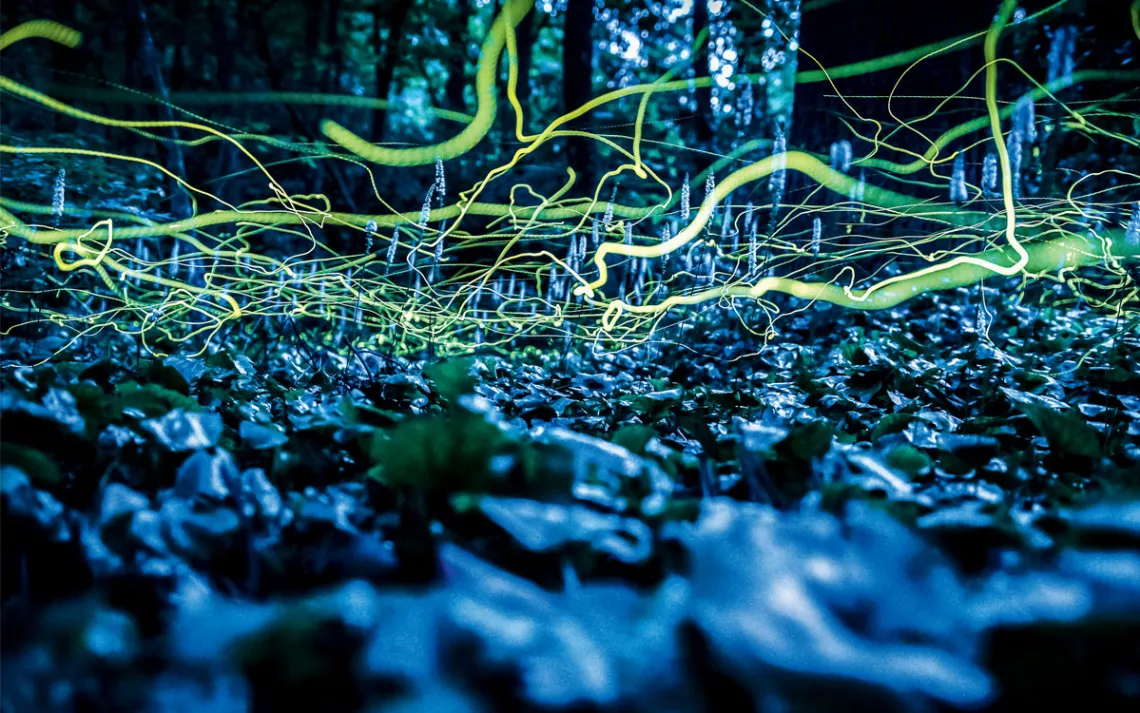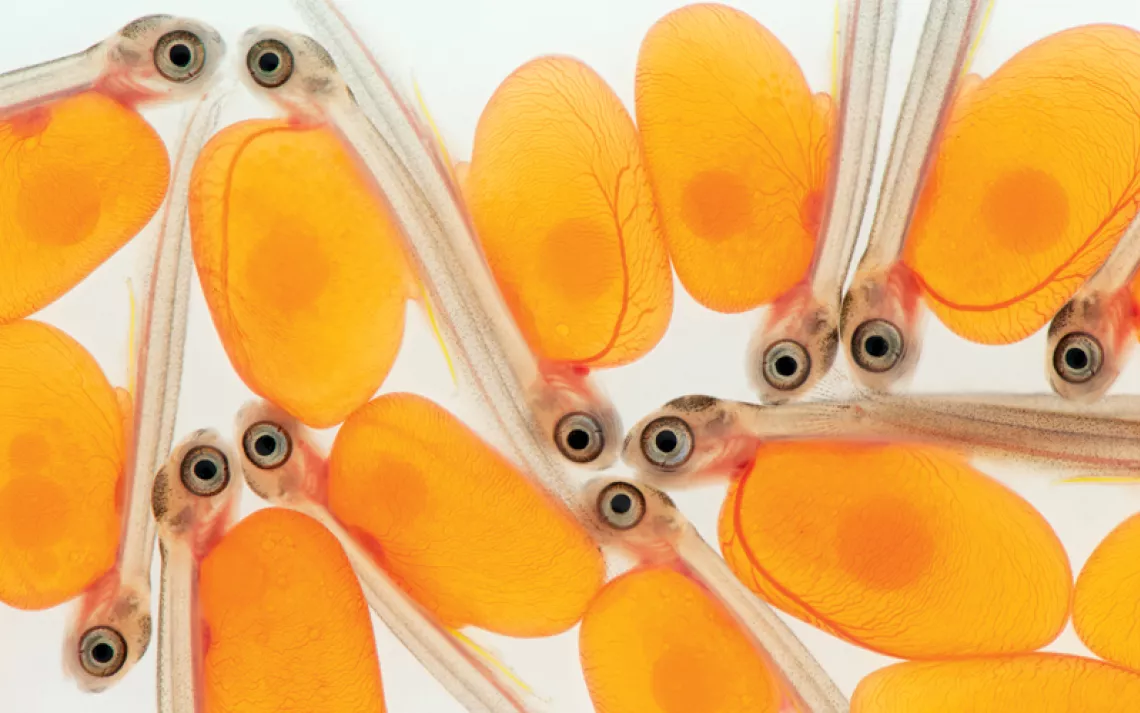The Magical Mystery Tour of Blue Ghost Fireflies
These incandescent bugs will light up your life

Photo by Spencer Black
As your eyes adjust to the darkness of the southern Appalachian night, the blue-white lights phase into sight just above the forest floor, like visitors materializing out of a parallel dimension. The eerie embers dance noiselessly through the ash trees and rhododendrons in long stretches, short hops, and vertical undulations, each glowing without interruption for a minute or more. In late spring, the woods shimmer in the hours after sundown; soon after midnight, all is dim again.
Phausis reticulata's otherworldly show has earned it a supernatural common name: the blue ghost firefly. "It makes me understand why people came up with elves and fairies," says Jennifer Frick-Ruppert, a biology professor at Brevard College in western North Carolina. "You can just imagine there's this little, tiny being carrying a candle through the forest."
The real blue ghosts are indeed tiny, each one roughly the size of a grain of rice. Only the males fly; the females maintain their wingless larval form through adulthood and crawl through the moist forest understory. But the ladies do glow from up to nine light spots on their abdomens, which they curl upward in a mating display for their airborne paramours.
It's not clear why blue ghost males shine at all. Females don't change their own signals when a glowing male is near, and other fireflies in the genus Phausis get by with female-only bioluminescence. Some researchers think that males use their lights like miners' headlamps to navigate safely through tangles of vegetation and orb-weaver spiders' webs. Others suggest that the glow is aposematic to predators—it's a warning that the firefly isn't good to eat.
The male display probably doesn't set a romantic mood. Female blue ghosts sometimes reject the advances of glowing suitors. And successful males do their mating business with the lights off.
Meanwhile, human illumination is a buzzkill on a broader scale. Light pollution is one of the biggest threats to fireflies. In North Carolina's DuPont State Recreational Forest, known as a hot spot for blue ghosts, a glut of flashlight-wielding tourists resulted in the state's forest service temporarily shutting down popular trails during the blue ghost seasons from 2016 to 2018.
Frick-Ruppert says that beholding the spectacle of the blue ghost is best achieved with open eyes and as little light as possible. "It takes a moment of being out in the forest and being part of the forest."
Explore
Take a Sierra Club trip to the South. For details, see sc.org/outings.
Blue ghosts are one of only two firefly species known to guard their offspring. Females hold clutches of about 30 eggs tightly to their bellies.
The blue ghost's glow is lime green, but it usually appears blue because of the Purkinje effect—our eyes become more sensitive to blue light in dark conditions.
One of the male blue ghost's main defenses is thanatosis, playing dead when threatened by predators.
 The Magazine of The Sierra Club
The Magazine of The Sierra Club






